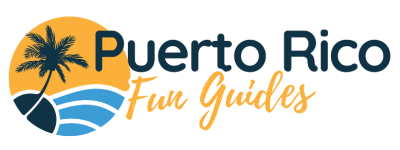-

Rainforest & Snorkeling Tours
Private tours for up to 4 people leaving 2 times per day from San Juan to secret waterfalls and natural swimming pools inside El Yunque National Forest
Book Now -

El Luquillo Snorkeling Tours
CPR Certified Guides All Equipment Included
LEARN MORE -

Custom Rainforest & Beach Tours
Completely Bespoke Adventure including Snorkeling, Twilight tours, and more.
Book Now
USE THE CODE PRFG24 AND SAVE 10% WHEN YOU BOOK NOW
Questions? Call: (406) 802-2304
Half -Day Tours Start Twice Per Day
Hiking & Swimming in El Yunque National Park
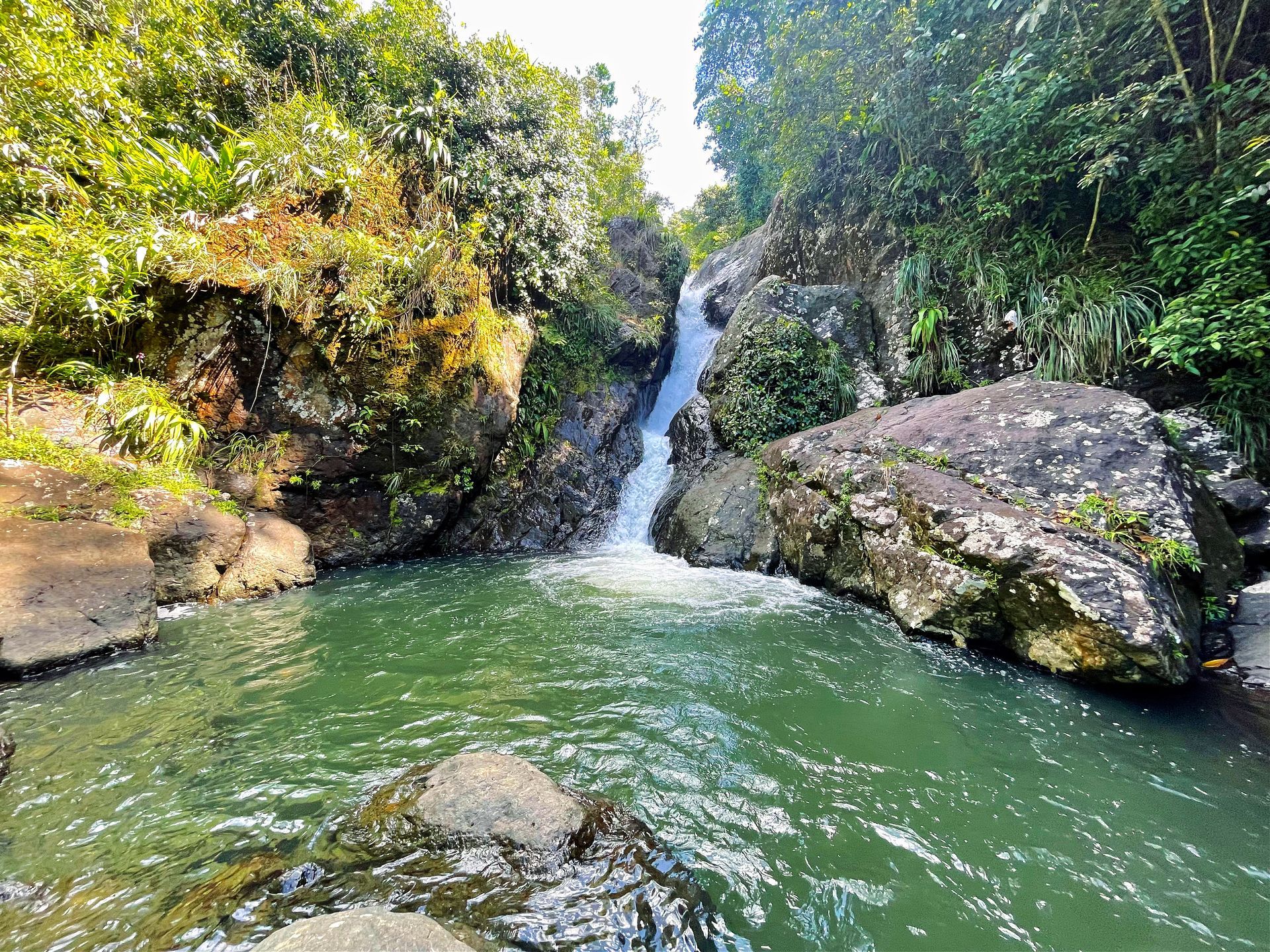
Slide title
Write your caption hereButton
Slide title
Write your caption hereButton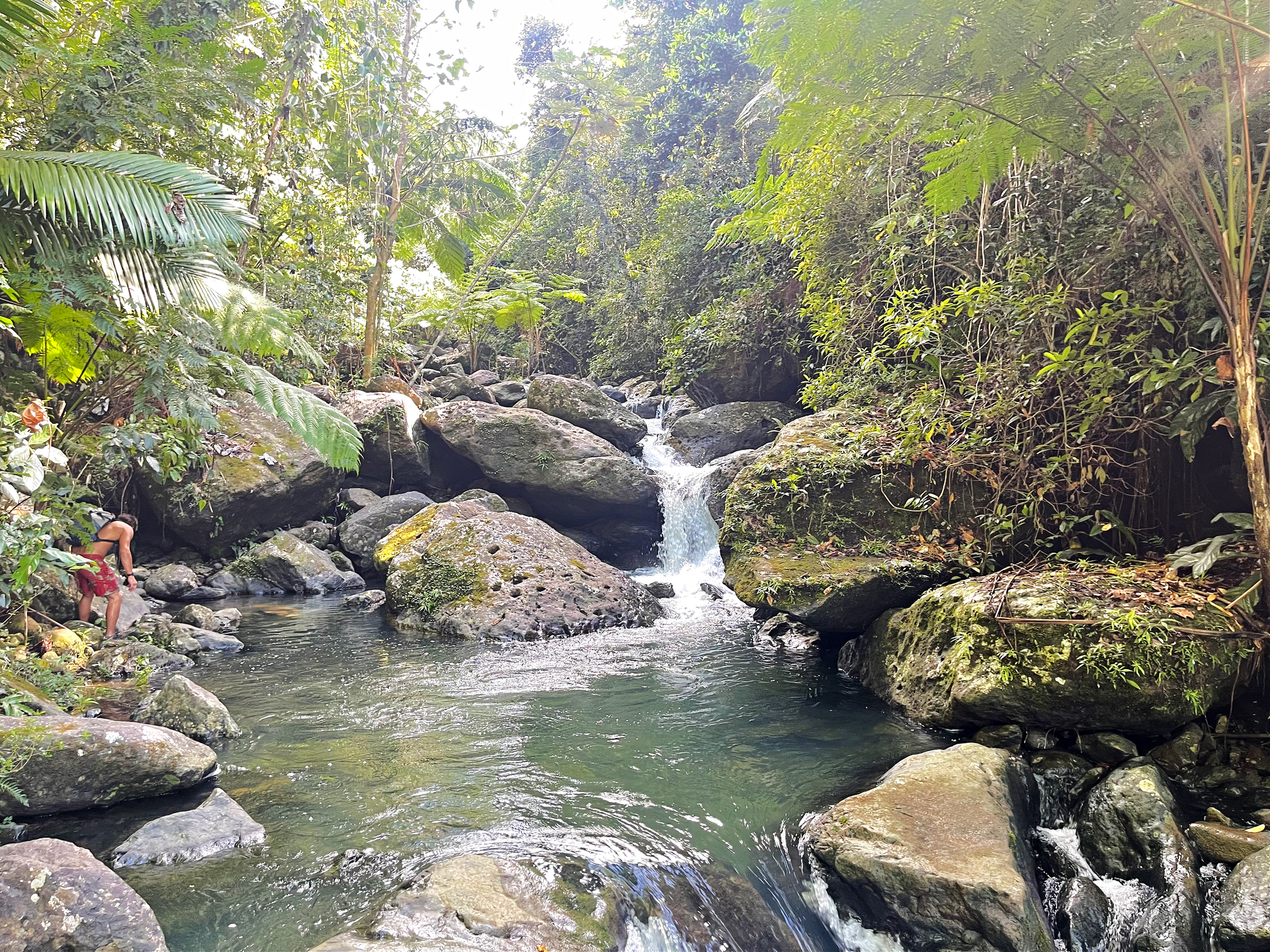
Slide title
Write your caption hereButton
1/2 Day Tours Start at 8:30 AM & 1:30 PM
Embark on a mesmerizing half-day journey to El Yunque National Forest, the sole tropical rainforest in the United States National Forest System. Spanning nearly 29,000 acres, this ecological treasure offers a moderate-level adventure featuring secret waterfalls, natural pools, and breathtaking views.
Snorkeling At Luquillo Beach

Slide title
Write your caption hereButton
Slide title
Write your caption hereButton
Slide title
Write your caption hereButton
1/2 Day Tours Start at 8:30 AM & 1:30 PM
Safely snorkel amidst tropical fish & reefs, try lobster snaring with all gear provided & CPR-certified guides. Includes snacks, drinks, cool coconut drinks & a photo package. Unforgettable fun guaranteed. We meet 2 time per day at a convenient San Juan location.
Custom Multi-Destination Tours

Slide title
Write your caption hereButton
Slide title
Write your caption hereButton
Custom Tours Start on Your Schedule
We also offer custom multi-destination tours for two or up to 50 people! Visit our secret spot in the El Yunque, enjoy the beaches and see all of the best of Puerto Rico safely with our CPR Certified Fun Guides. We always guarantee a FUN TIME, EVERY TIME!
Experience More With Our Custom & Private Tours: Twilight, Hiking, Surfing & Snorkeling.
Embark on a tailor-made adventure with our versatile custom guided private tours, designed to offer a unique blend of activities, including twilight excursions, hiking, swimming, and snorkeling in the breathtaking landscapes of Puerto Rico. Whether you're seeking a serene evening under the stars, an exhilarating swim, a tranquil snorkel, or an adventurous hike to our secret spot, our custom tours cater to your every desire.
Questions about your booking? Call us!
We guarantee fun tours! What our clients are saying...
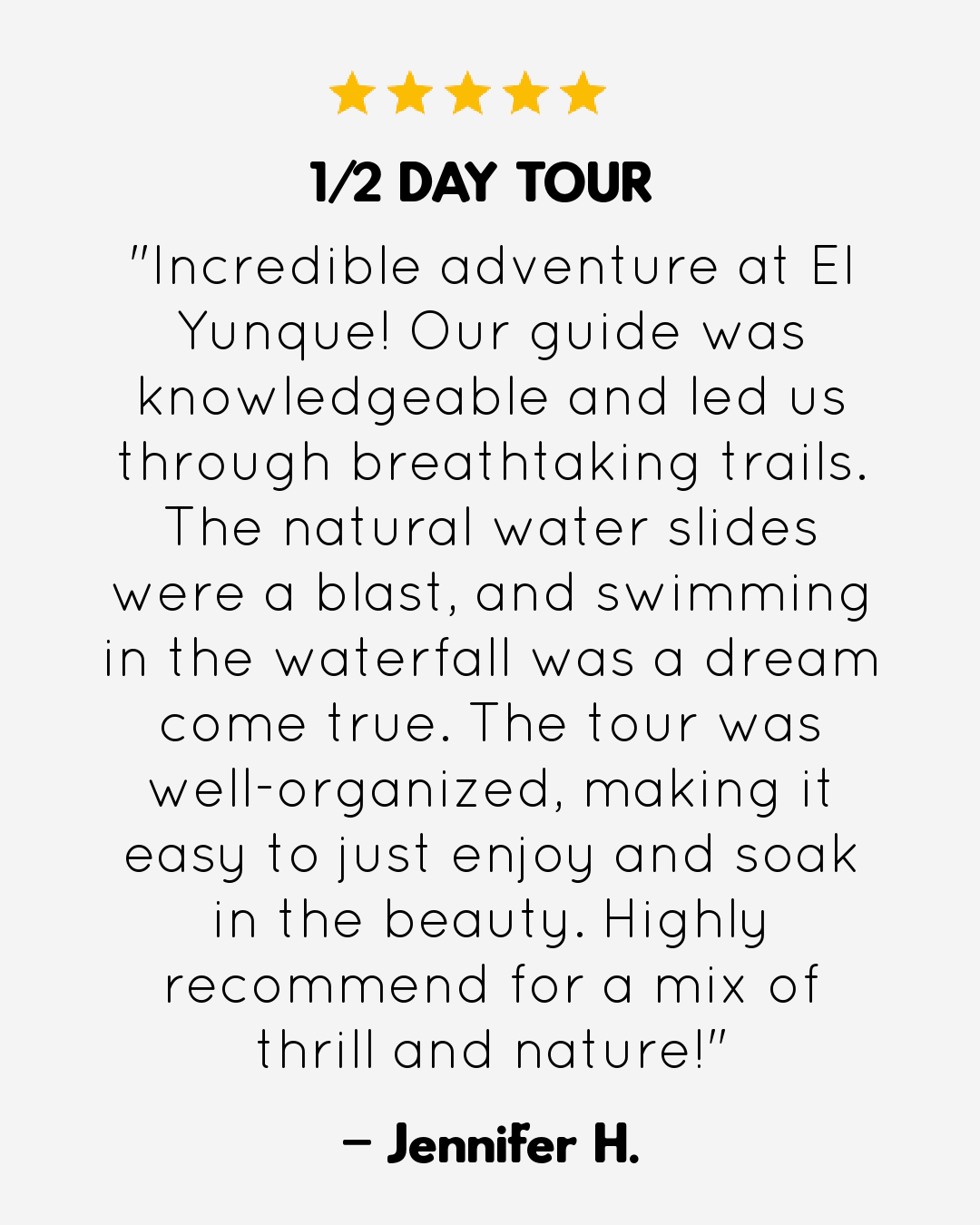

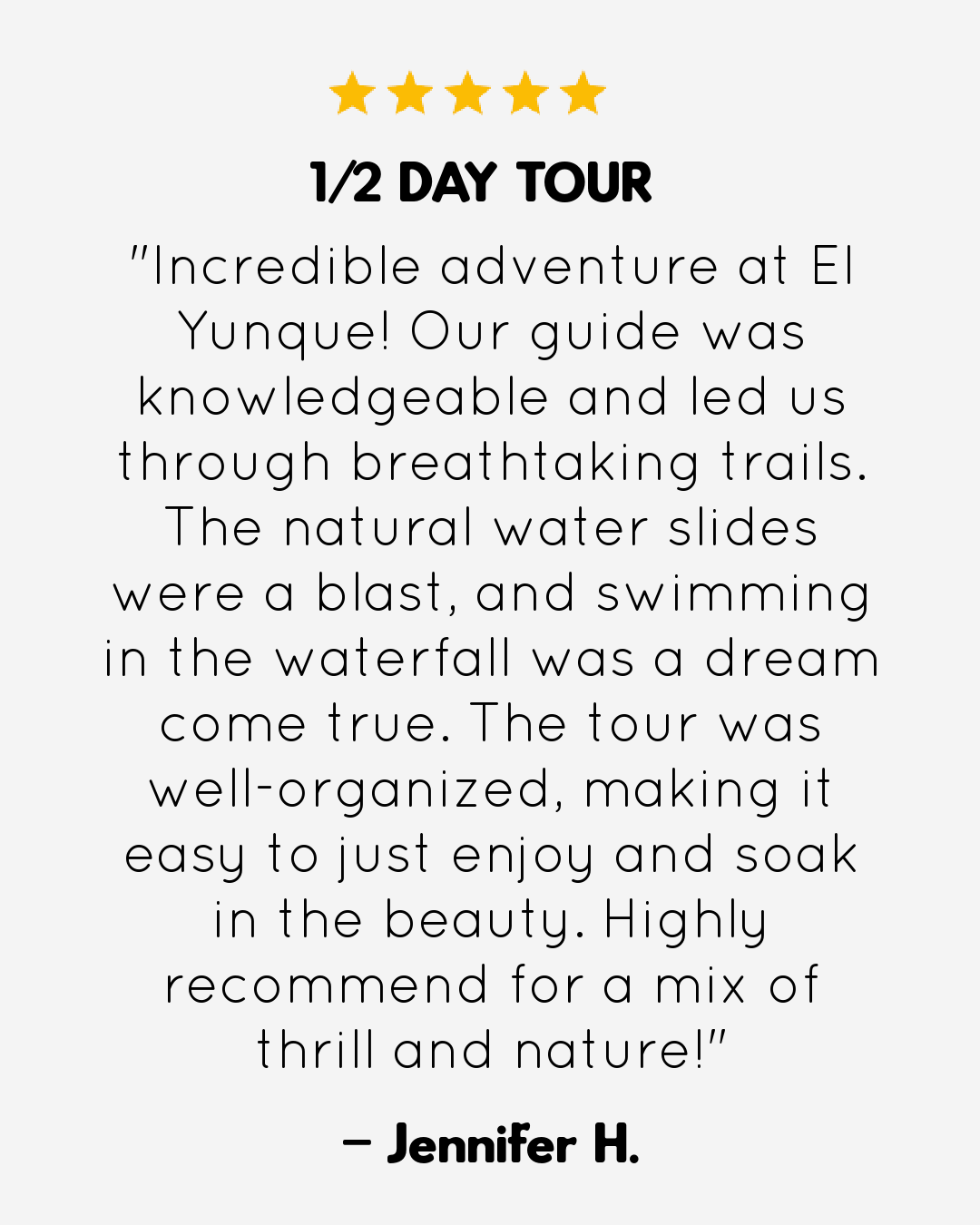

Get Your Basic Questions About Travel and Tours in Puerto Rico Answered Here.
-
Closest Commercial Airport to Luquillo
The nearest major airport is Luis Muñoz Marín International Airport (SJU) in San Juan. It's about 40 minutes' drive to Luquillo. This airport serves numerous international and domestic flights, making it a convenient entry point for your Puerto Rican adventure.
-
Airport Transportation to Luquillo
From SJU Airport, you have several options to reach Luquillo. Rental cars are available at the airport and offer flexibility for exploring the island. Taxis and ride-sharing services like Uber are also readily available for direct transportation. For a more budget-friendly option, public buses operate but may have limited schedules and routes.
-
Puerto Rico Island Transportation Options
In Puerto Rico, there are a variety of transportation options available for travelers, ensuring that you can navigate the island effectively and enjoyably. Here's a comprehensive breakdown:
1. Car Rentals
Availability: Over 14 car rental companies operate in Puerto Rico, offering a range of vehicles to suit different needs.
Convenience: Renting a car is the most efficient way to explore the island, especially if you plan to venture beyond San Juan or visit multiple locations.
Cost: Rates for economy-sized cars start around $40–$50 per day, with potential increases during holidays. Basic insurance is an additional cost but recommended.
Age Requirements: Most companies require renters to be at least 25, though some accommodate drivers over 21 with an additional charge.
Driving Conditions: Expect congested traffic in urban areas and more serene driving in remote regions. Be prepared for different driving behaviors compared to the mainland US.
Road System: Puerto Rico has a well-maintained road system with freeways and highways. Tolls range from $0.50–$1.25, and it's recommended to carry coins for toll booths.
2. Public Transport
Públicos (Bus Services): Operate on set routes but are quite localized and used mainly by students and the elderly. They are not recommended for extensive travel across the island due to limited connectivity between towns.
Trolleys: Various towns offer trolleys for transportation to key locations and landmarks.
Metro Area Buses: The Metropolitan Bus Authority provides various routes in the San Juan metro area.
3. Ride-Sharing (Uber)
Availability: Uber operates in the metro region of Puerto Rico, including San Juan, Bayamón, Guaynabo, and other municipalities. It's the only major ride-sharing service on the island.
Cost: Uber fares are generally lower than in many US cities, with typical rides ranging from $5-$10, though prices can surge during peak hours or in popular areas.
Limitations: Uber is more prevalent in the San Juan area, and availability decreases in remote areas.
4. Taxis
Availability: Taxis are readily available at airports, tourist attractions, and hotels. They can be hailed on the street or called for pickup.
Fares: In San Juan, taxis have metered fares. Fixed rates apply in designated tourist zones. Additional fees may apply for luggage, late-night, and airport drop-offs.
Tips: Fares are paid in cash, and tolls and tips are not included in the fare.
5. Ferries and Domestic Flights
Ferries: Operated by the Puerto Rico Port Authority, regular passenger ferries connect to Vieques and Culebra from Fajardo. For other offshore islands like Isla de Mona, private boat operators are required.
Domestic Flights: Flights connect San Juan with Mayagüez, Ponce, Vieques, and Culebra. Flights to the smaller islands of Vieques and Culebra are often on smaller planes and book quickly during holidays.
Recommendations
For Extensive Exploration: Renting a car is ideal if you plan to travel extensively across Puerto Rico, offering the most flexibility and convenience.
For Stays in San Juan: If your stay is concentrated in the San Juan metro area, utilizing Uber and taxis can be a cost-effective and convenient option.
For Remote Areas: In more remote or less touristy areas, car rental becomes more essential due to the limited availability of public transport and ride-sharing services.
-
Recommended Attire for Puerto Rico Tours
Dress comfortably for a tropical climate. Lightweight, breathable clothing is ideal. For rainforest tours like El Yunque, wear sturdy walking shoes, and bring swimwear for water activities. For beach tours, bring a hat, sunglasses, and flip-flops. Always pack a rain jacket or umbrella, as tropical showers can be sudden.
Tourists often forget sunscreen, insect repellent, and hats, crucial for protection against the sun and insects. Also, bring a reusable water bottle, a small backpack for day trips, and a camera or smartphone for photos. Don't forget any necessary medication and a basic first-aid kit.
-
Useful Spanish Phrases
Basic Spanish phrases can enhance your experience. Key phrases include 'Hola' (Hello), 'Gracias' (Thank you), 'Por favor' (Please), '¿Dónde está...?' (Where is...?), '¿Cuánto cuesta?' (How much does it cost?), and '¿Habla inglés?' (Do you speak English?).
-
Currency in Puerto Rico
Puerto Rico uses the United States Dollar (USD). Credit and debit cards are widely accepted, but it's advisable to carry some small denomination cash, especially in smaller towns or for small purchases. Change can be challenging to produce in more remote areas.
-
Electrical Outlets and Voltage
Puerto Rico uses Type A and B electrical outlets, the same as the United States, with a standard voltage of 110-120V. If you're traveling from a country with different standards, you may need a power adapter or voltage converter for your devices.
-
Best Time to Visit Puerto Rico
The best time to visit is typically from November to June, offering a perfect escape during the cooler months and avoiding the rainy summer season. Puerto Rico enjoys a warm tropical climate year-round, with average temperatures typically ranging from 75°F to high 80s. This period allows visitors to experience the island's beauty comfortably, making it an ideal window for exploring its diverse landscapes and cultural offerings.
-
Safety Tips for Travelers
Puerto Rico is generally safe for travelers. However, as with any destination, exercise standard precautions. Avoid isolated areas at night, keep valuables secure, and stay aware of your surroundings. It's also wise to stay informed about the local weather, especially during hurricane season (June to November).
-
Local Cuisine Recommendations
Puerto Rican cuisine is a must-try, with dishes like Mofongo (mashed plantains), Lechón (roasted pork), and Arroz con Gandules (rice with pigeon peas). Don't miss out on local seafood and the famous Pina Colada. For a truly local experience, try the street food kiosks at Luquillo Beach.
-
Drinking Water Safety
Tap water in Puerto Rico is generally considered safe to drink. However, if you have a sensitive stomach or prefer to be cautious, opt for bottled water, especially in remote areas.
-
Connectivity and Wi-Fi Availability
Most hotels, restaurants, and tourist spots offer free Wi-Fi. Mobile data is also readily available with local SIM cards, providing good coverage in urban and most rural areas.
-
Healthcare and Medical Facilities
Puerto Rico has good healthcare facilities, especially in major cities. Pharmacies are widely available. However, it's recommended to have travel insurance that covers medical expenses for peace of mind.
-
Cultural Etiquette and Customs
Puerto Ricans are known for their warm hospitality. Greeting people with a smile and a polite 'Buenos días' (Good morning) or 'Buenas tardes' (Good afternoon) is appreciated. Tipping is customary in restaurants and for services, similar to mainland USA standards.
-
Beach and Water Safety
Beach and water safety in Puerto Rico is paramount, especially considering the island's diverse coastal environments. Here's an overview to ensure a safe and enjoyable experience:
General Safety Tips
Swimming Skills: Essential for ocean swimming. Even with flotation devices, the ability to swim is crucial.
Awareness: Never turn your back on the ocean to avoid being surprised by large waves.
Buddy System: Never swim alone and always supervise children near water.
Rip Current Awareness: Be mindful that any beach can have rip currents. Learn to spot and safely exit them.
Beaches with Notable Rip Currents
North Coast: Known for rip currents, especially during high surf conditions and low tide.
Specific Beaches:
- Jobos Beach in Isabela
- Piñones area in Loíza
- Candelario Beach at Palmas del Mar in Humacao
- San Juan area beaches like Isla Verde, Condado (La Concha), Ocean Park, and Escambrón
- Playa Caracoles and Poza del Obispo in Arecibo, Mar Chiquito in Manati, Playa Escondida in Fajardo
- Domes Beach in Rincón, Playa Azul, and La Pared in Luquillo
- Flamenco Beach in Culebra
- Some south coast beaches, notably in Guánica.
Identifying and Escaping Rip Currents
Identification: Rip currents often appear as calm areas where waves are not breaking, with churning, choppy water or debris being pulled out to sea.
Escape Technique: If caught, remain calm and don't fight the current. Float or tread water until the current dissipates, then swim parallel to the shore before heading back to the beach.
Conclusion
When visiting beaches in Puerto Rico, always prioritize safety. Check local conditions, follow instructions, and be cautious of rip currents. Understanding these risks and knowing how to respond can greatly enhance your beach experience while keeping you safe.
-
What to Pack for Rainforest Tours
For rainforest tours, pack insect repellent, waterproof clothing, a swim suit, a towel, and comfortable, non-slip shoes. A waterproof bag or case for your phone and camera is also recommended.
-
Handling Emergencies
In case of an emergency, dial 911 for assistance. It's also useful to have contact information for your country's embassy or consulate in Puerto Rico.
-
Local Festivals and Events
Puerto Rico celebrates a vibrant array of festivals and events throughout the year, each offering unique cultural experiences. Here are some notable annual festivals:
Fiesta de los Reyes Magos (Three Kings Day): Celebrated on January 6th in Juana Díaz, Isabela, and other municipalities, this festival honors the Epiphany with parades and gifts for children.
Fiestas de la Calle San Sebastián: Taking place in Old San Juan on the third weekend of January, this event marks the end of the holiday season with music, dance, and street parties.
Festival de la Novilla: Held in San Sebastián on the third weekend of January, this festival features parades, music, and a decorated cow leading a procession.
Festival del Frío: Celebrated in Adjuntas in late February, this festival embraces the coldest peak in Puerto Rico with carnival rides, local artisans, and live music.
La Campechada: Occurring in May or November, this event celebrates Puerto Rican art and culture with performances, fairs, and workshops.
Carnaval Ponceño: A week-long festival in Ponce, occurring in February or March, featuring colorful parades, vejigantes, and various cultural activities.
Festival de Teatro Puertorriqueño e Internacional: Running from May to June in Santurce, San Juan, this theater festival showcases local and international plays.
Festival de la Piña Paradisíaca: Celebrated in La Parguera, Lajas, in May or June, this festival honors locally grown pineapples with vendors, music, and races.
Noche de San Juan: On June 23rd in San Juan, people celebrate Saint John's Eve with beach gatherings and midnight ocean jumps for good luck.
Festival de Santiago Apóstol: Held in Loíza in late July, this festival features parades with vejigantes, bomba music, and dance performances.
Festival Nacional Indígena: Taking place in Jayuya at the end of November, this festival honors Puerto Rico's indigenous Taíno culture and traditions.
Nochebuena: On December 24th, Christmas Eve is celebrated island-wide with traditional food, drinks, and music.
These festivals reflect the rich cultural tapestry of Puerto Rico, celebrating everything from religious traditions to local arts, music, and cuisine. Visitors are welcomed to participate and immerse themselves in the vibrant Boricua culture.
-
Sustainable Tourism Practices
Respect local environments and communities. Follow 'Leave No Trace' principles, support local businesses, and be mindful of your ecological impact. Puerto Rico offers numerous eco-friendly tour options for environmentally conscious travelers.
Questions about your booking? Call us!
Leave us a message
We will get back to you as soon as possible.
Please try again later.
Contact Info
Hours
7 Days a week.
9:00 AM - 5:00 PM


